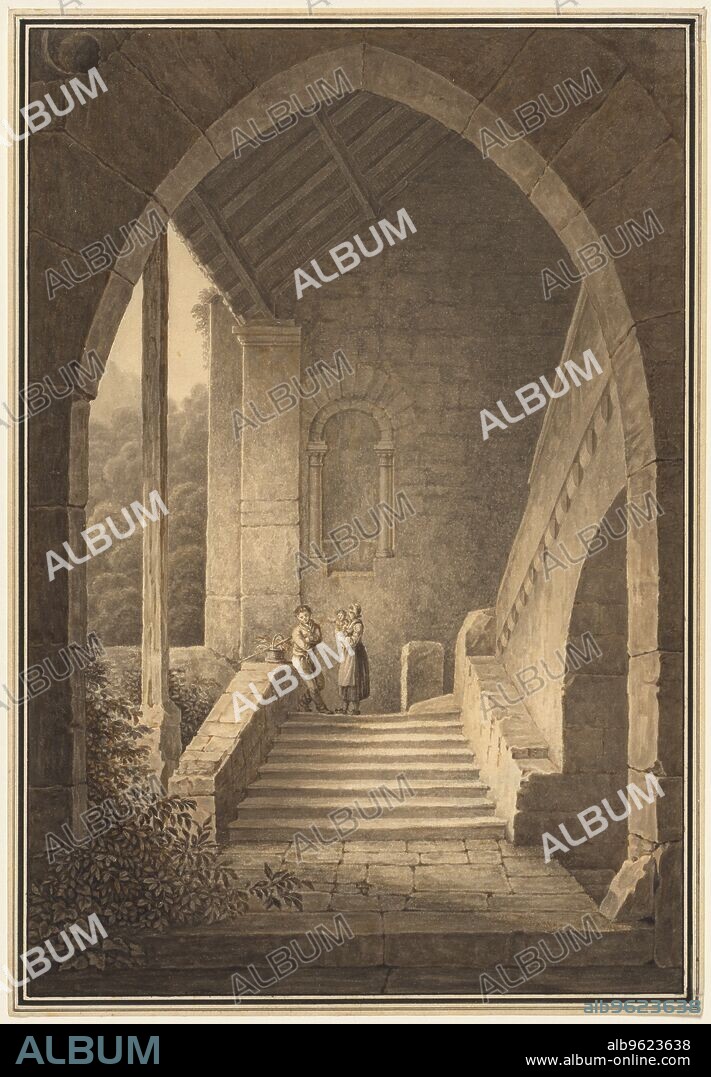alb9623638
Outer Staircase of a Gothic Ruin (Treppenaufgang einer gotischen Ruine), 1830. Creator: Domenico Quaglio (German, 1787-1837).

|
Ajouter à une autre Lightbox |
|
Ajouter à une autre Lightbox |



Avez-vous déjà un compte? S'identifier
Vous n'avez pas de compte ? S'inscrire
Acheter cette image.
Sélectionnez l'usage:

Titre:
Outer Staircase of a Gothic Ruin (Treppenaufgang einer gotischen Ruine), 1830. Creator: Domenico Quaglio (German, 1787-1837).
Légende:
Voir la traduction automatique
Outer Staircase of a Gothic Ruin (Treppenaufgang einer gotischen Ruine), 1830. Quaglio was recognized as the finest German topographical painter of his generation, and he showed a special affinity for dramatic buildings of the Gothic period. In this watercolour, a young family pauses in the archway of what appears to be a ruined Gothic church. Ivy encroaches upon the stairs, and a dense forest may be seen in the distance. Views of ruined churches juxtaposed by untamed nature frequently appeared in the landscapes of German Romantic artists who believed that nature signified the presence of God. Here, Quaglio contrasts the immensity of the Gothic ruin with the delicacy of the tiny infant. A major component of German Romanticism was the renewal of Gothic architecture as a symbol of Germany’s glorious past. The association of Gothic architecture with Germany was in fact based on the false assumption that a Germanic tribe, the Goths, had originated the style. Nevertheless, medieval ruins and Gothic buildings infiltrated landscapes of the period as symbols of that which was essentially German.
Crédit:
Album / Heritage Art/Heritage Images
Autorisations:
Modèle: Non - Propriété: Non
Questions sur les droits?
Questions sur les droits?
Taille de l'image:
3676 x 5295 px | 55.7 MB
Taille d'impression:
31.1 x 44.8 cm | 12.3 x 17.6 in (300 dpi)
 Pinterest
Pinterest Twitter
Twitter Facebook
Facebook Copier le lien
Copier le lien Email
Email
